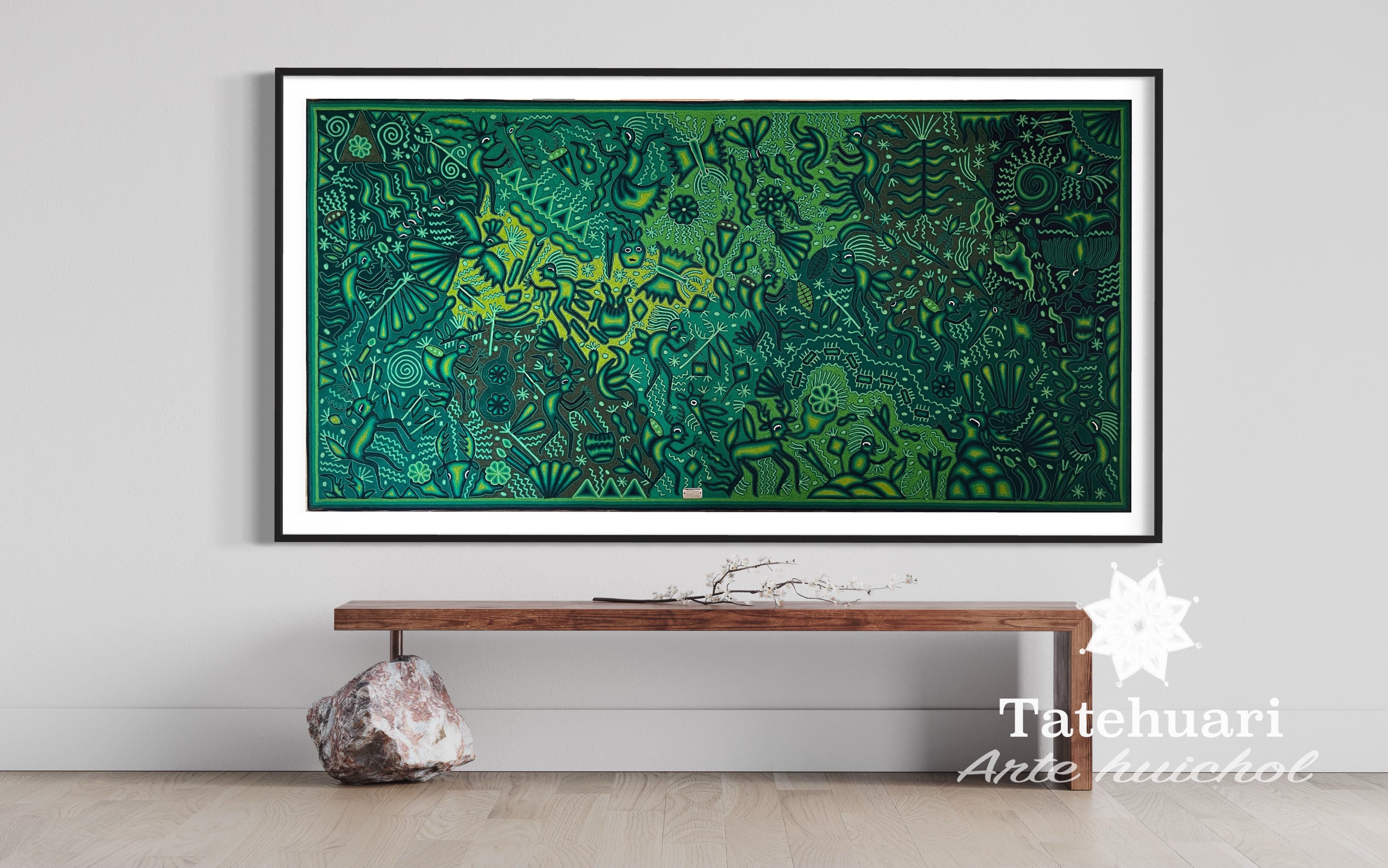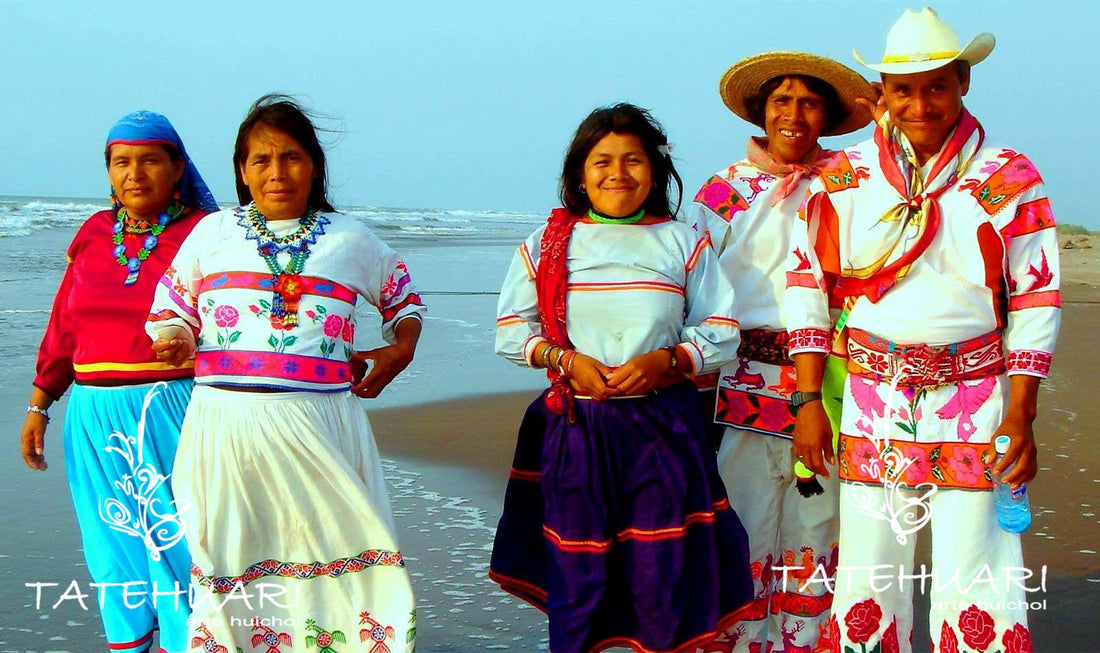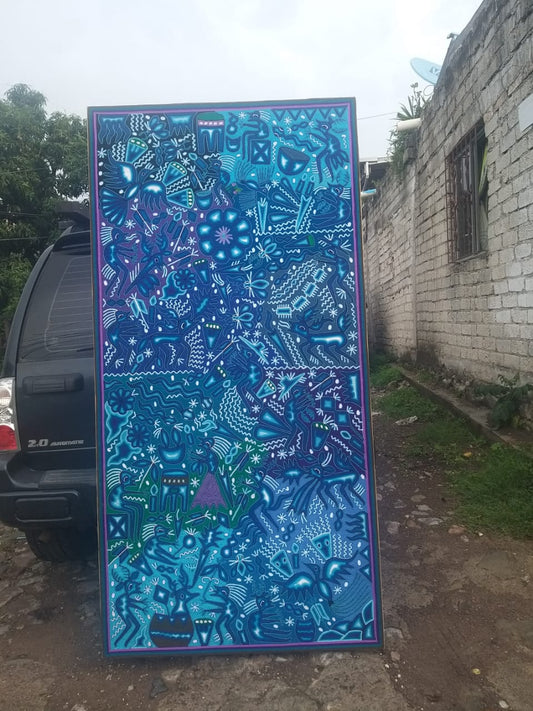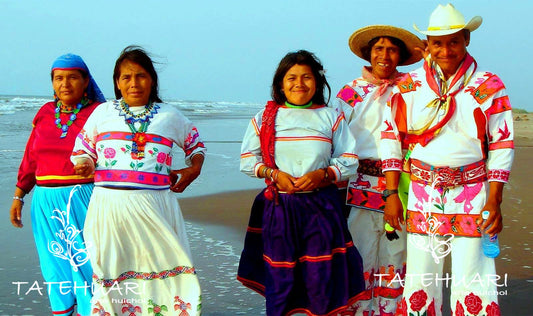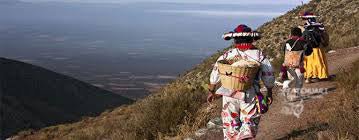
The Wixarikas indigenous people, currently known as Huichols, inhabit the central West of Mexico in the Sierra Madre Occidental, mainly in the States of Jalisco, Nayarit, Durango and Zacatecas. They call themselves Wixarica or 'the people' in their language called by linguists Wixaritari or Vaniuki (known as the Huichol language), which belongs to the Uto-Aztec language family. The ethnonym Huichol was given by the Mexicas in a derogatory way to the Wixarrikas since before the Spanish Conquest.
The Wixaritari speak a language of the Cora-Chol group that is closely related to the Nahua or Aztecoid group. They have also received Mesoamerican influences, which is reflected in the fact that Huichol has typical features of the Mesoamerican linguistic area.
The Wixárika region sits mainly on the spine of the Sierra Madre Occidental, in the state of Jalisco and Nayarit. Divided into five large communities, each of which is autonomous; it has its own civil and religious authorities. The civil authority is headed by a governor called totohuani and is renewed annually. The maraakates or maraakames -singers or priests- are the ones who preserve and keep the traditions alive.
The Wixaritari are notorious for the showiness of their clothing. The Kamirra (kamixa - shirt) or kutuni, that is to say 'long shirt', open on the sides and fastened at the waist with the juayame 'wide and thick sash' made of wool or worsted. On top of the sash are several little embroidered backpacks called kuihuame or huaikuri, attached with a cord. Nothing is stored in them, they serve only to complete the decoration. Crossed over his shoulder he wears one or more kuchuri or woven or embroidered backpacks. On the back, the tubarra, a kind of embroidered scarf, is tied around the neck and has a strip of red flannel on the edge. A hat that they call rupurero (xupurexu - *šubureru - hat), made of palm and decorated in different ways depending on the use: with beads, feathers, yarn, flowers, thorns or pieces of bark. The man is always the one who wears the most ornate clothing.
The wife puts all her care so that the garments look very well embroidered. In contrast to the men's clothing, the Huichol woman's dress is simple: It consists of a short blouse up to the waist, which they call kutuni. The waistband skirt called ihui, has a wide band of embroidery on the lower edge, the same as the blouse. The head is covered with the ricuri, made up of two white blanket squares also beautifully embroidered. The traditional decorative designs of Huichol clothing are of enormous variety and have preserved a magical meaning since ancient times, which was described by the Norwegian anthropologist Carl Lumholtz, El México Desconocido in 1896.
For their festivities, the Huichols usually paint their faces with symbolic drawings and in the ritual ceremonies the maraakates use the muwieris 'sticks decorated with feathers'. Their religion consists of four main deities: Maize, Eagles, Deer and Peyote, all are descendants of the Sun, "Tau." Their religious acts are carried out on a mountain called Wirikuta or 'Burned', in the state of San Luis Potosí (Mexico). This mountain is divided into two, one side for women and the other for men. In their religious acts, peyote is usually used, here is an extract of what the use of this cactus means for them:
There are those of us who have some physical illness, of the soul or of the heart or we simply have not been able to find our life. In this living and magical desert, at the end of the world, the Blue Deer will reveal himself to us to find our life, he will teach us, he will be our medicine...
A maximization of the spirit will lead us to the point of temporary transformation in transition to spiritual exaltation, to find the forces of balance. That ineffable ability to venture without fear on the narrow bridge across the great abyss that separates the ordinary world from the world beyond. To achieve these forces of balance we must overcome our fears, remove the bad thoughts from our hearts and unite them. Pilgrims must be clean of all evil feelings, we must return to the period of life in which we were innocent, before we were adults, mundane, since we came to be born to this motherland. We will be able to pass from this world to the afterlife, because upon receiving the Blue Deer, we will stop being ordinary, we will be transformed. But we must remember that it is only temporary because we are only men and women and not gods
It is worth mentioning that religion is implicit through the life of the wixárika, it is part of their identity and is present throughout their actions, customs and in daily life both individually and in the community. Religion becomes a fundamental commitment in their existence, it is part of their culture and their different forms of expression.
#vacation #Huicholes #Art Huichol #Craft Huichol #Wixarrika
